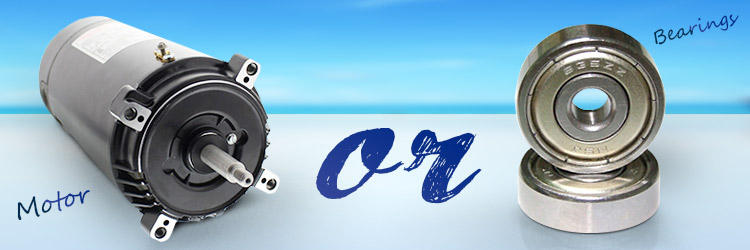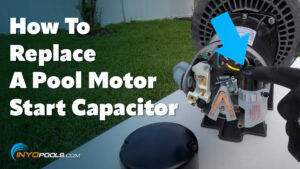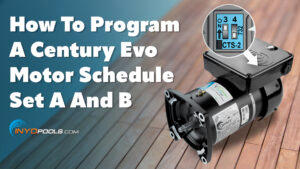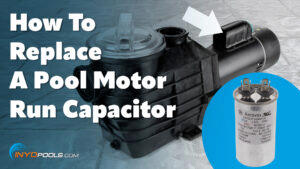That is a loaded question if I have ever heard one (or read, in this case). When a motor goes down, the pool’s owner has a hill of decisions to make in a short period. Depending on time of year, he/she may only have a day or two before the pool water begins to turn.
The main question an owner of a newly failed motor asks people like me is, whether they should replace the motor or have it rebuilt. Both routes have their pros and cons and I’ll walk you through my thoughts and at the end I’ll give you my general verdict on the matter.
Re-build it and they will come…
Rebuilding the motor is definitely the cheaper of the options; with a lower upfront cost, is it actually worth it? The answer lies in your mechanical abilities and how long you plan on keeping the pump.

When we talk of “rebuilding” motors that is generally a reference to replacing the shaft bearings. These bearings are the sealed round discs that suspend the shaft within the motor. They allow for a smooth, virtually friction-free, and quiet spinning of the shaft. That is why the telltale sign of bad bearings is a loud screeching sound equivalent to a freight train slamming its breaks. The ear drum shattering racket is annoying to you and your neighbors. Expect a few complaint notes taped to your door or a friendly driveway discussion if bad bearings are left unchecked.
The process of replacing bearings is laborious or in simple terms a real pain in the neck. Electric motors are solid hunks of metal meant to withstand heat and the rigors of outdoor installation. The task of disassembling the motor is naturally a very involved process and over the capabilities of some pool owners.
Besides the bearings, some of the tools needed for a rebuild are not ones usually found in your standard toolkit:
- Bearing Puller – Aptly named, the bearing puller permits the removal of the bearing without excessive force or hammering that could cause damage to the shaft.
- External Ring Pliers – Removes the front and rear bearing snap ring.
If you have to buy these tools, that could set you back $30. Plus the cost of bearings, you may be in $80 on tools before the rebuild starts. Tools that are also used in bearing replacement are a hammer, piece of pipe and open ended socket wrench. If any of these are not on hand, add that to the $80 dollars already on the tab.
After all the buying there is still the matter of putting the motor back together. If you are interested in the process, take a look at our pool pump motor bearing replacement guides: Part 1 and Part 2. For the untrained person, the task could take a couple of hours after trial and error that hopefully does not damage the motor further.
The simple solution is to have a professional do the job. Trained repairmen can finish the job in about a half hour to an hour of solid work. The downside is the price which will likely fall in the price range of $90 and up. The good part about hiring out the job is knowing it will be done correctly and if it is not then you have someone else to blame besides yourself. Just kidding.
Are you keeping the pump for long?
Ask yourself, how long do I plan on keeping this pump? The answer varies because you may be planning on repairing the current motor so you can limp to the end of the season. This means you can put off worrying about long term solutions until the coming spring. Or, you may be planning to sell your home and do not expect to be fiddling with the pump and its issues longer than a few more months.
I bring up this point because rebuilding a motor is basically putting a bandaid on an already infected wound. The bandage may stop it from further infection but it will not cure the already festering problem. The only cure for a bad motor is a brand new motor. My suggestion is do not pay twice and replace the motor.
“Motorin’ what’s your price for flight…”
I have heard many variations of “I just want to replace it and be done with it” from frustrated pool owners over the years. When the pool pump is down, so is the fun level and no one likes that.
The good part about getting a brand new motor is just that, it is brand new. A fresh motor should last your pool for a few years and if maintained should not cause you any issues until the next time it is replaced. Unlike with a rebuilt motor, a new one comes with a 1-year factory warranty covering all manufacturer defects.
The downside of a brand new motor is the upfront cost. Motors vary in cost greatly but the most common single speed motors out there will range from $150 – 300. Hopefully, the pool owner can do the replacement themselves which will save a service call. If not, then that may be another $50 – 80 bucks added to the total. But keep in mind with these prices a brand new motor should put off more bills for a few pool seasons. A rebuilt motor will cost you the price of the rebuild now and then the cost of a brand new motor later.
Do not pay twice, just get the new motor and save the trouble.
Thank you for letting me rant about motors. If you have any questions about replacing a pool motor, take a look at our pool pump motor replacement how to guide. Or, call one of our techs who will gladly answer any of your questions.













Leave a Reply